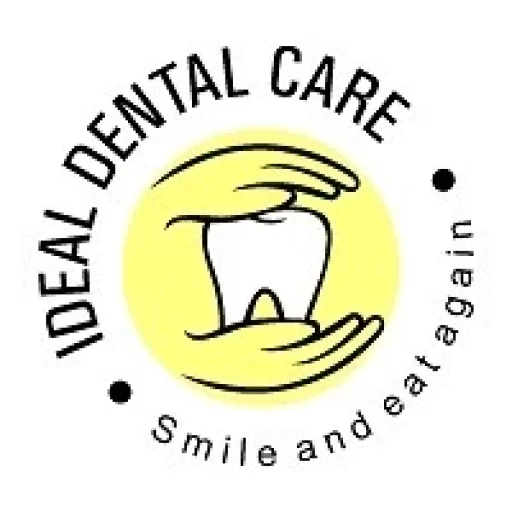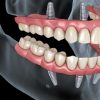Smile Transformation: Immediate Dental Implant Placement After Extraction
The field of dentistry has seen remarkable advancements in recent years, particularly in the realm of dental implantology. Immediate placement of dental implants after extraction has gained significant popularity among patients and dental professionals alike. This innovative approach not only minimises the time and discomfort associated with traditional implant procedures but also offers numerous benefits, including improved aesthetics and function. In this comprehensive guide, we will delve into the world of immediate implant placement, its advantages, considerations, and post-operative care.
Immediate implant placement, also known as immediate post-extraction implant placement, is a dental procedure where a dental implant is inserted into the jawbone immediately after the extraction of a tooth. This approach is in contrast to the conventional method of waiting for the extraction site to heal before placing an implant, which typically takes several months.
It is proven time and again that there is no better method to replace missing teeth, which is better than Dental Implantation and it is one of the best long-term investments for your Oral Health.
Advantages of Immediate Implant Placement:
a. Reduced Treatment Time:
One of the primary advantages of immediate implant placement is the significant reduction in overall treatment time. Patients can often receive a new tooth in a single visit, eliminating the need for multiple appointments and long waiting periods.
b. Preservation of Bone and Soft Tissue:
Immediate implant placement helps preserve the bone and soft tissue in the extraction site, preventing the loss of volume that can occur during the natural healing process. This preservation is crucial for maintaining facial aesthetics and ensuring the long-term success of the implant.
c. Improved Aesthetics:
By immediately replacing a missing tooth with an implant, patients can enjoy improved aesthetics and self-confidence. The implant closely mimics the appearance and function of a natural tooth, providing a seamless and lifelike result.
d. Enhanced Function:
Immediate implants provide better functionality compared to traditional methods, as they allow patients to resume normal eating and speaking activities sooner. This is especially beneficial for individuals who have lost a front tooth, where aesthetics and function are paramount.
e. Greater Patient Satisfaction:
The reduced treatment time, enhanced aesthetics, and improved function associated with immediate implant placement lead to higher patient satisfaction and increased acceptance of this treatment modality.
Who Needs Immediate Implant Placement?
Not all patients are suitable candidates for immediate implant placement. Several factors need to be considered, including:
a. Overall Health:
Patients must be in good general health to undergo any dental procedure. Conditions such as uncontrolled diabetes or heart disease may need to be managed before considering implant placement.
b. Adequate Bone Quality and Quantity:
The presence of sufficient bone in the extraction site is essential for implant stability and long-term success. In cases of severe bone loss, bone grafting may be necessary before implant placement.
c. Infection Control:
Any existing infection or periodontal disease in the affected area must be treated and resolved before implant placement.
d. Proper Occlusion:
A stable and balanced occlusion (bite) is crucial for the success of dental implants. Any issues with a patient’s bite should be addressed before implant placement.
e. Patient’s Expectations:
Realistic patient expectations are essential. It’s important to discuss the limitations and potential complications associated with immediate implant placement.
Steps for Immediate Implant Placement Procedure
a. Extraction of the Tooth:
The first step is the extraction of the tooth to be replaced. The extraction should be performed with great care to minimise damage to the surrounding bone and soft tissue.
b. Implant Placement:
After tooth extraction, the implant is placed directly into the socket. The implant should be of appropriate size, length, and design to ensure stability and primary stability.
c. Bone Grafting (if necessary):
In cases where there is insufficient bone to support the implant, bone grafting may be performed simultaneously. This involves adding bone material to the extraction site to augment the volume and facilitate implant integration.
d. Immediate Loading (in some cases):
In select cases, the implant can support a temporary crown or prosthesis immediately after placement. This option is available when sufficient primary stability is achieved.
e. Suturing:
The surgical site is sutured to facilitate proper healing and minimise the risk of infection.
Post-Operative Care and Considerations:
a. Medications:
Patients are typically prescribed antibiotics and pain medications to prevent infection and manage post-operative discomfort.
b. Oral Hygiene:
Maintaining good oral hygiene is crucial. Patients should follow their dentist’s instructions for proper brushing and flossing, and being careful around the surgical site.
c. Diet:
A soft diet is recommended for the first few days following surgery to avoid putting excessive pressure on the implant. Patients can gradually transition back to a normal diet as healing progresses.
d. Follow-Up Appointments:
Regular follow-up appointments with the dentist are necessary to monitor the healing process and ensure the implant integrates successfully.
e. Long-Term Care:
Dental implants, whether immediately placed or not, require proper long-term care. Regular dental check-ups and professional cleanings are essential to maintain the health of the implant and surrounding tissues.
Potential Risks:
While immediate implant placement is a well-established and successful procedure, there are potential complications and risks to be aware of, including:
a. Infection:
Infections can occur at the surgical site, which may necessitate additional treatment and, in rare cases, implant removal.
b. Implant Failure:
Implant failure can happen due to various factors, such as poor osseointegration, improper implant placement, or excessive forces on the implant.
c. Soft Tissue Complications:
Issues with the soft tissues, such as gum recession or peri-implantitis (inflammation around the implant), can affect the long-term success of the implant.
d. Nerve or Blood Vessel Damage:
In rare cases, damage to nearby nerves or blood vessels during surgery can lead to sensory or circulation issues.
e. Aesthetic Complications:
Suboptimal implant placement or bone loss can result in aesthetic issues, such as a visible gap between the implant and the adjacent teeth.
Immediate placement of dental implants after extraction is a cutting-edge technique that offers numerous advantages, including reduced treatment time, enhanced aesthetics, and improved function. However, not all patients are suitable candidates, and the procedure carries potential risks and complications. Patients need to consult with a qualified dental professional who can assess their specific case and recommend the most appropriate treatment plan.
If you’re considering immediate implant placement after extraction, consult with an experienced dentist or oral surgeon who can provide personalised guidance and ensure a successful outcome. This procedure has the potential to transform your smile and quality of life, providing a long-lasting, natural-looking solution to replace missing teeth.
Take the First Step Towards Your Dream Smile:
Don’t let missing teeth or uncomfortable dentures hold you back any longer. At Ideal Dental Care, we are dedicated to helping you achieve a healthy, beautiful smile that enhances your overall well-being.
Contact us today to schedule your consultation and begin your journey to a more confident and vibrant you. We look forward to helping you seize the future of your dental health with immediate dental implant placement.




